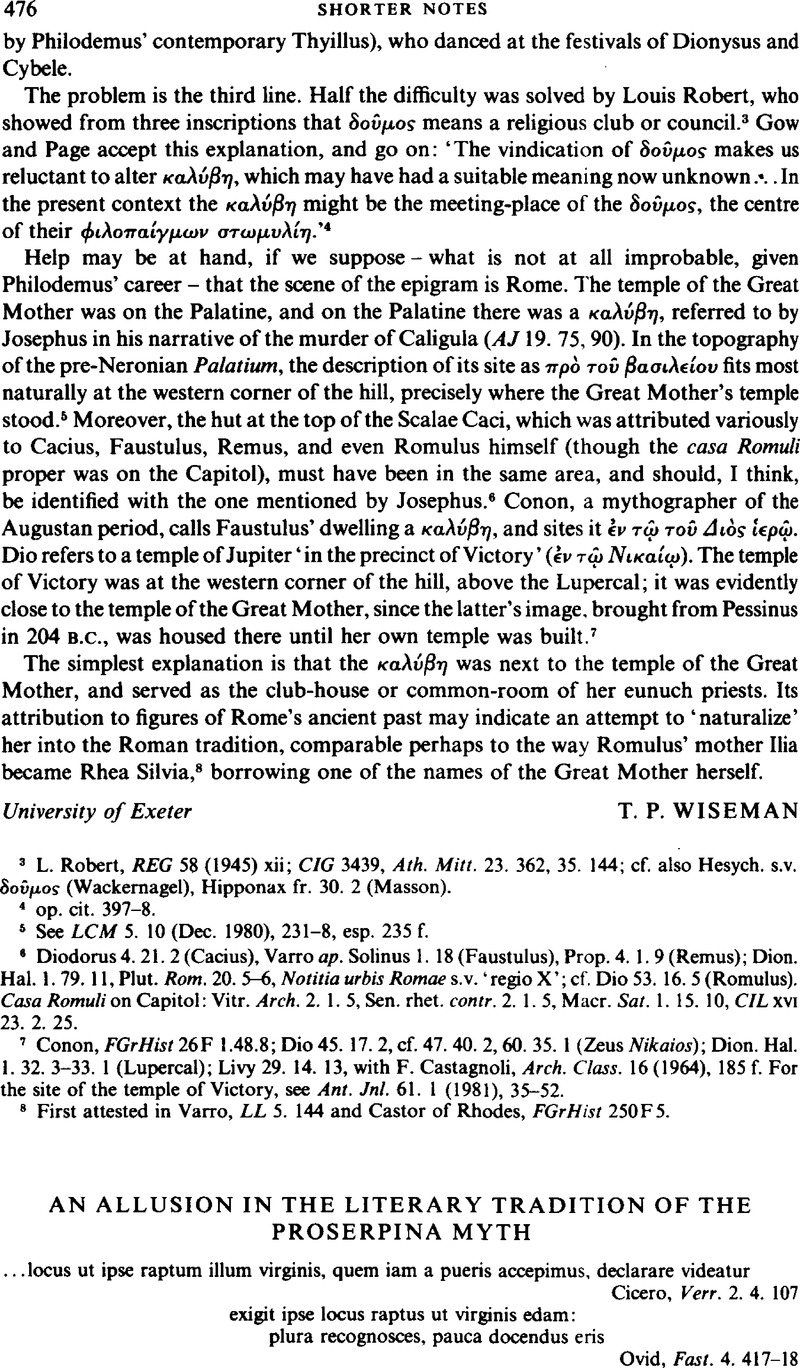Published online by Cambridge University Press: 11 February 2009

1 For a full survey of the literary tradition of the myth, see Richardson, N. J., ed., The Homeric Hymn to Demeter (Oxford, 1974), pp. 68–86.Google Scholar
2 Augustan allusion to Cicero's words about Enna is also to be found at Liv. 24. 37–9, where Ciceronian associations enrich the account of Pinarius' massacreat Enna during the Second Punic War. The opening words of Livy's account, Henna, excelso loco ac praerupto (24. 37. 2), echo the opening of Cicero's ecphrasis, Henna…est loco perexcelso atque edito (Verr. 2. 4. 107). A little later, Pinarius' speech to his men calls to mind the section of the final address to the gods in the Fifth Verrine in which Cicero evokes the present passage of the Fourth: vos, Ceres mater ac Proserpina, precor, ceteri superi infemique di, qui hanc urbem [i.e. Hennam], hos sacratos lacus lucosque colitis (Liv. 24. 38. 8); vos etiam atque etiam imploro et appello, sanctissimae deae [picking up Ceres et Libera earlier], quae illos Hennensis lacus lucosque incolitis (Cic. Verr. 2. 5. 188); cf. lacus lucique at 2.4. 107. Finally, the view of Pinarius’ action as sacrilege (Liv. 24. 38. 8–9) must, I think (the commentators, who note the two parallels above, are silent here), owe something, if not everything, to Cicero's denunciation of Verres’ crimes against the gods at Enna (Verr. 2. 4. 110–12). In particular, compare Livy's description of Enna as non hominum tantum sed etiam deorum sedem with Cicero's more elaborate conceit in the same vein beginning etenim urbs ilia non urbs videtur, sed fanum Cereris esse. The number and nature of these similarities is such as to put paid to any doubts arising from our ignorance of what was in Livy's main source for the episode (presumably Polybius; see Klotz, A., Livius und seine Vorgänger (Leipzig/Berlin, 1940-1), p. 113), and to guarantee Ciceronian influence.Google Scholar
The writers on rhetoric furnish ample evidence of the celebrity of the Verrines in general and of the present passage in particular: see Sen. Suas. 2. 19; Quint. Inst. passim; on Verr. 2.4.106 f., Inst. 4. 2. 19, 4. 3. 13, 9. 4. 127, 11. 3. 164.
3 In connexion with this, I am tempted to suggest that edam at the end of the line may react with the fleetingly geographical locus before the caesura to produce a pun on the opening words of the Ciceronian ecphrasis (quoted in n. 2 above): the demand in Fast. 4. 417 would come very appropriately from a locus perexcelsus atque editus.